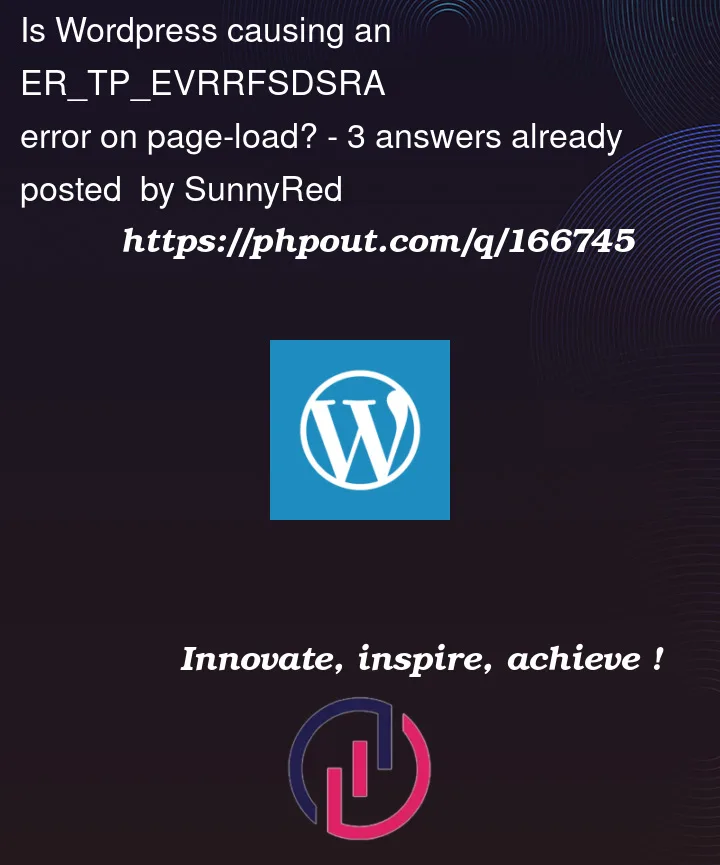I do have at least two wordpress sites which very inconsistently throw a varying number of net::ERR_HTTP2_SERVER_REFUSED_STREAM errors. When these errors occur the number of errors thrown highly varies from page-load to page-load (or reload) from say 4 requests with that error to about 60 and sometimes even more (if the page has some many requests). The actually affected ressources/requests seem completly random and therefore don’t leave any clue where this is coming from.
If these errors occur their occurrence mostly persists (when doing a simple page refresh or hard refresh) until the browser is restarted. Seldomly they even stay after a restart as well.
When this hiccup does happen and the browser/system gets in this faulty state, these errors also happen in the wordpress backend loading basic files like .../wp-includes/js/wp-lists.min.js?ver=5.7 and similar.
At least two users have experienced this behaviour in Chrome, Opera and Edge while being logged-in to and -out of wordpress. In Opera and Edge we do not have any browser extensions installed. As far as we know other users never had this issue even though some of them visited the site many times.
What might be the reasons for this and/or what might be a way to solve it?
List of Plugins installed on both sites:
- Image Map Pro
- Kadence Blocks – PRO Extension
- Kadence Blocks – Gutenberg Blocks for Page Builder Features
- Kadence Galleries
- Kadence Pro
- Lessify WordPress
- Password Protect WordPress Lite
- Presto Player
- Presto Player Pro
- Slider Revolution
- WP Google Maps
- WP Google Maps – Pro Add-on
- WPvivid Backup Plugin
- WPvivid Backup Pro




3
Answers
This is not related to WordPress. It’s related to either Apache or Nginx using the HTTP/2 standard.
It can either come from too many concurrent streams:
It can also be sent during a Push Response operation:
Or if the client is trying to connect using HTTP/1.1:
There is no way for me to pinpoint what is happening during those requests, as it can have multiple reasons, as stated above.
So I suggest you a couple of options:
SETTINGS_MAX_CONCURRENT_STREAMSto minimize the risk of sending aREFUSED_STREAM. If you use Nginx, you can see how to do this here: http://nginx.org/en/docs/http/ngx_http_v2_module.html#http2_max_concurrent_streamsIf you use Apache, everything I said above applies to it as well.
As you said,the count of stream error is more than requests. A possibie explains is stream is push streams which has even stream id. Push stream is initiated by server side. In cotrast, stream initated by client side has odd id.
Why error counts so much?
We follow key error word to try to find some roadmap.
search key word ERR_HTTP2_SERVER_REFUSED_STREAM in chromium github repo
We get the following sutuation to reply ERROR_CODE_REFUSED_STREAM.
Browser handles server side stream RST frame (SpdySession::OnGoAway).RST frame means closing stream but not closing session.
we may recevive error ERR_HTTP2_SERVER_REFUSED_STREAM
Browser handles server side stream Goway frame (SpdySession::OnGoAway). Goway frame means closing session. Server side request goway frame without any error(spdy::ERROR_CODE_NO_ERROR).
we may recevive error ERR_HTTP2_SERVER_REFUSED_STREAM
The error counts is far more than the requests. So we may be led to stage concultion.
Server side sent RST frame with high probability.
Now we keep digging in.
search key word ERROR_CODE_REFUSED_STREAM in chromium github repo
Server may sent ERROR_CODE_REFUSED_STREAM with the following suituation:
Useful utility
use debug tools to get more info.
or
About server push news
Chrome to remove server push
I got the same error 2023 in Chrome connection to k8s nginx container, that had 100’s of small .js files to load.
"net::ERR_HTTP2_SERVER_REFUSED_STREAM"
No problem with Firefox, only Chrome.
After trying all kinds of nginx settings it was resolved for me by upgrading my ingress-nginx helm chart from 4.2.0 to latest 4.6.0 🙂
https://github.com/kubernetes/ingress-nginx/releases